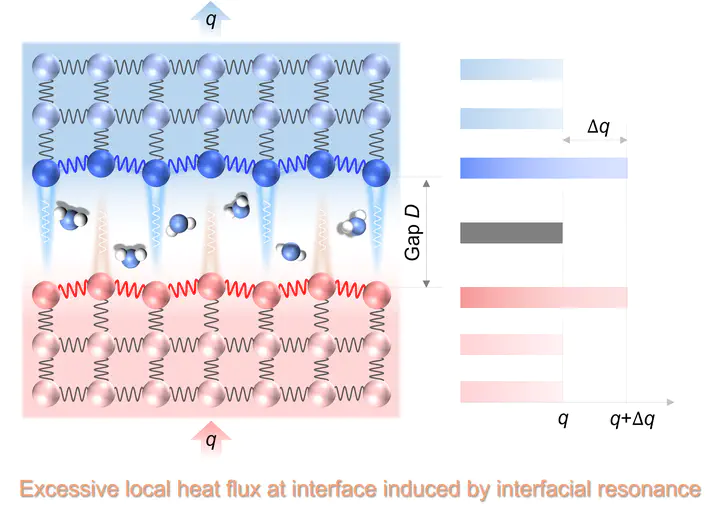
Abstract
Interfacial thermal resonance plays a crucial role in facilitating extreme near-field heat transfer, while the underlying mechanism of interfacial heat transfer remains unclear. Herein, we employed nonequilibrium molecular dynamics simulations to observe the local heat flux at Pt–vacuum, Pt–H2O, and Pt-Ar interfaces. Our findings reveal that thermal resonance exists between the interfacial solid layers even in the presence of liquid but dissipates as the distance between two solid walls increases. Notably, a singular excess in local heat flux appeared only at resonant interfacial layers, whereas a uniform distribution was observed in the absence of interfacial resonance. Lennard–Jones interactions predominantly govern energy transport within interfacial solid and liquid layers, while Coulomb interactions become more significant in the bulk water. These results demonstrate that interfacial resonance contributes significantly to excessive local heat flux, enhancing our understanding of interfacial heat transfer mechanisms and potentially facilitating the manipulation of nanoscale energy transport.